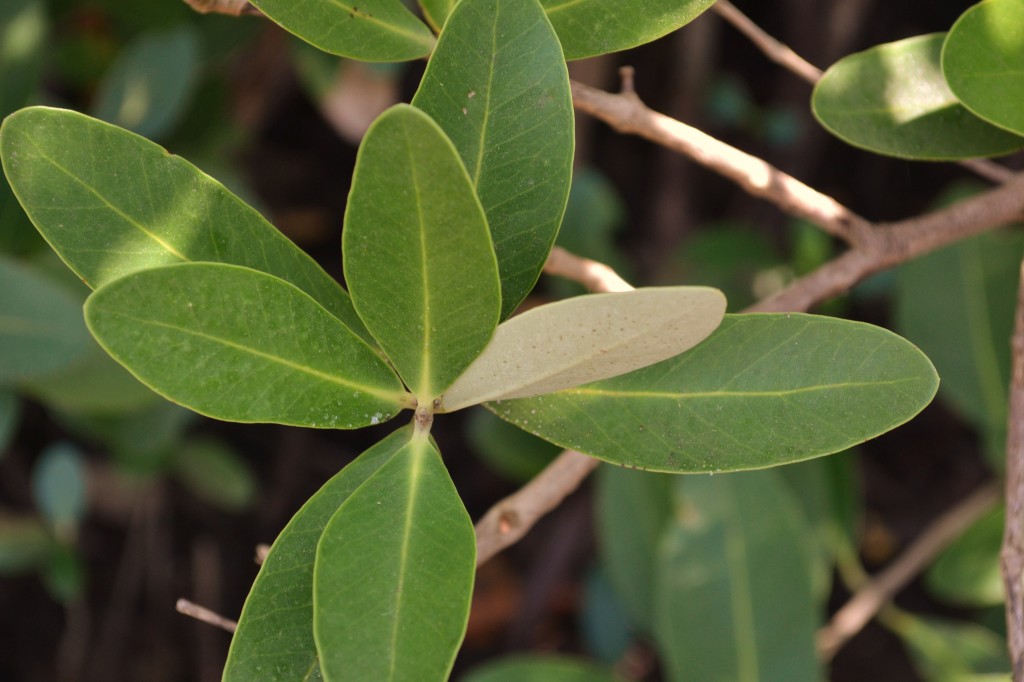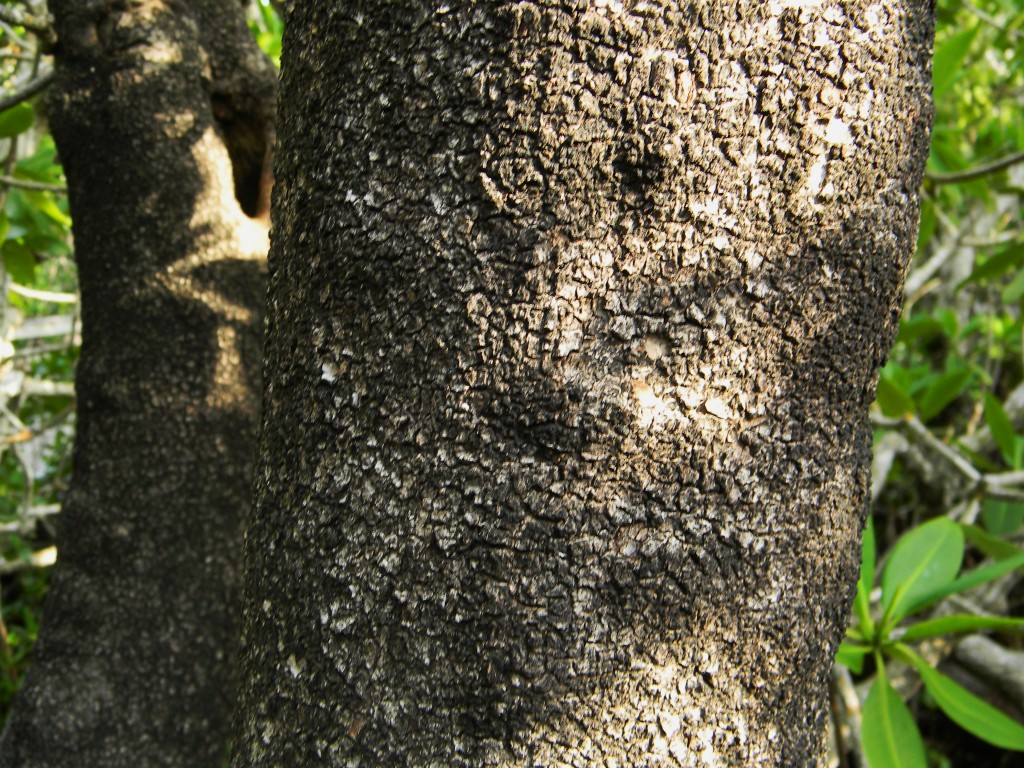Black Mangrove
Avicennia germinans
Plant Family: Acanthaceae
Leaves: Opposite, simple, elliptic, to about 10 cm, green above, grayish below, salt crystals are commonly present on the surface (as shown).
Bark: Black with small blocks; upright breathing roots called pneumatophores are present in the mud surrounding each tree.
Flowers: White, with four petals, in terminal clusters, quite fragrant, from which bees make a prized honey; throughout the year, peaking in the summer months.
Fruits: A flattened, green, pointed pod, to 4 cm long; all year, peaking in the fall.
Habitat: Coastal zone, mudflats, it may share habitat with Red Mangrove (Rhizophora mangle) but it is also found inland of that species.
Growth Form: A shrub to small tree in Florida, it grows larger further south in the tropics.
Key Features: Of the mangroves, it has leaves green above, whitish gray beneath, black bark, and many breathing roots.
Comments: Black Mangrove has a widespread distribution, occurring on the coasts of Florida, the Bahamas, the West Indies, Central and South America, the Galapagos Islands, and West Africa.


